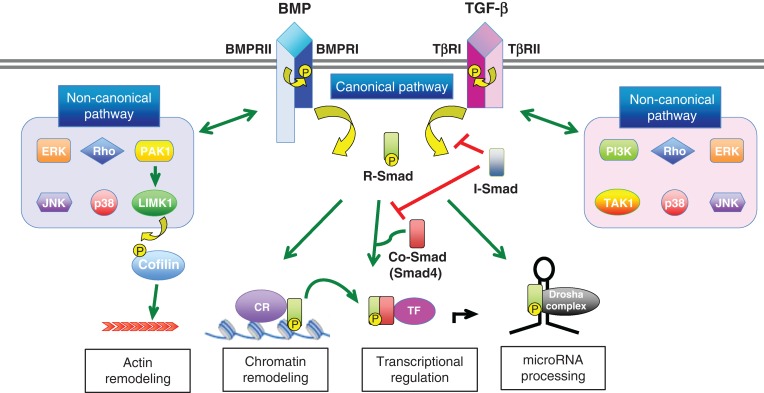Figure 1.
Signal transduction by TGF-βs and BMPs TGF-β and BMP ligands induce formation of heteromeric complex between specific Type II and Type I receptors. The Type II receptors transphosphorylate the Type I receptors and activate the Type I receptor kinases. The Type I receptor transmits the signal to the cell by phosphorylating receptor-regulated (R)-Smads, which form heteromeric complexes with Smad4 (common (Co)-Smad) and translocate in the nucleus where by interacting with other transcription factors regulate gene transcriptional responses, chromatin remodeling, and/or control of microRNA processing [‘canonical (or Smad-dependent) pathway’]. Inhibitory (I)-Smads; Smad6 and Smad7 inhibit activation of R-Smads. In addition, the activated Type I receptors can activate ‘non-canonical (or non-Smad) pathway’ via different effectors, such as extracellular signal-regulated kinases (ERK), c-Jun N-terminal kinase (JNK), p38, Rho, phosphoinositide 3-kinase (PI3K), transforming growth factor beta-activated kinase 1 (TAK1), p21 (RAC1) activated kinase 1 (PAK1), and LIM domain kinase 1 (LIMK1). CR and TF stand for chromatin remodeling protein and transcription factor, respectively.

